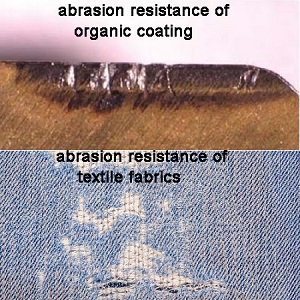
NewsInformation Center
How to improve pilling in fabric?
2023/09/01
Pilling is the formation of small, fuzzy balls or pills on the surface of fabric due to friction or abrasion. While it is difficult to completely eliminate pilling, there are several steps you can take to minimize or improve pilling in fabric:

1. Fabric Selection: Choose fabrics that are less prone to pilling. Natural fibers such as wool, silk, and cashmere tend to pill more than synthetic fibers like polyester or nylon. Fabrics with tighter weaves or smoother surfaces are often less prone to pilling.
2. Fiber Blends: Opt for fabric blends that incorporate synthetic fibers along with natural fibers. Synthetic fibers like polyester or nylon are more resistant to pilling and can help improve the overall durability of the fabric.
3. Fabric Finishing: Consider fabrics that have undergone anti-pilling or durable finishing treatments. These treatments involve applying chemicals or processes to the fabric during manufacturing to reduce pilling. Look for fabric labels that indicate anti-pilling or pilling-resistant properties.

4. Laundering and Care: Proper care and laundering can help minimize pilling. Follow the care instructions provided by the fabric manufacturer, as excessive heat, agitation, and friction during washing or drying can contribute to pilling. Use gentle cycles, mild detergents, and avoid overloading the washing machine to reduce abrasion.
5. Garment Inside Out: When laundering or ironing garments, turn them inside out. This helps minimize surface friction and reduces the chances of pilling.
6. Avoid Harsh Surfaces: Avoid wearing or rubbing the fabric against rough surfaces or abrasive materials like Velcro. Such surfaces can cause increased friction and accelerate pilling.
7. Fabric Softeners: Use fabric softeners or conditioner sheets during laundering to help reduce friction and soften the fibers. This can potentially minimize pilling.
8. Garment Construction: Pay attention to the construction of garments. Seams, stitches, and trims can contribute to localized areas of friction and pilling. Ensure that the garment is well-constructed with appropriate reinforcement in areas prone to friction, such as underarms or where straps rub against the fabric.
9. Pill Removers: If pilling does occur, you can use a fabric pill remover or a fabric shaver to gently remove the pills. Be careful not to apply too much pressure or shave too aggressively, as this can damage the fabric.
It's important to note that while these steps can help minimize pilling, it may not eliminate it entirely, especially in fabrics that are naturally prone to pilling. Additionally, pilling can also be influenced by factors such as fabric quality, usage patterns, and environmental conditions.
Previous: Unraveling the Mysteries of the Button Snap Tensile Test Machine
N e x t : 10 Tips for Mastering the Button Pull Test Method



